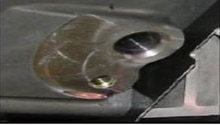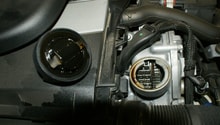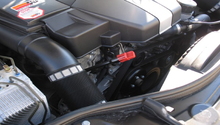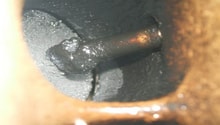Mercedes-Benz C-Class: Why is My Car Burning Oil?
Take a few moments to read these potential solutions to any oil concerns with your Mercedes-Benz C-Class w204. Then, determine which one works for you.
This article applies to the Mercedes-Benz C-Class w204 (2007-2014).
No one likes to think of an engine burning or using excessive oil. Thankfully, some worries are groundless, especially if your car is new. Older and high-mileage cars can have worn parts, which present different problems.

Materials Needed
- PCV valve
- Full metric socket set
- Engine hoist
- Compression tester
- Welding equipment
- Gaskets and seals
Step 1 – Break-in period for new cars
A break-in period is when the vehicle is new, and the engine requires a certain amount of time to begin operating properly to its full potential. This includes oil circulation and distribution inside the engine. A typical break-in period is 1,000 miles, but can be as much as 2,000 miles.
Compared to other cars, Mercedes-Benz may have used different manufacturing methods to make your C-Class w204. This can result in some oil burning during the break-in period. For example, some engines may have "rougher" cross-hatching in the cylinders from the boring process. This can result in oil flowing into these marks or passed them into the cylinders and burning there. When the cross-hatching smooths out from you running the engine, the oil burning stops.
It is also normal for the piston rings to require a settling-in period, where their fit becomes optimal in the cylinder. Before that, some oil may flow passed the rings into the cylinder chamber and burn there.
Either of these can lead to smoke out of the exhaust, especially upon startup. You may also have to add a quart of oil during the first 1,000 miles of driving. Both of these issues are considered normal, and almost always clear up during the break-in period. If they do not, see your selling dealer.
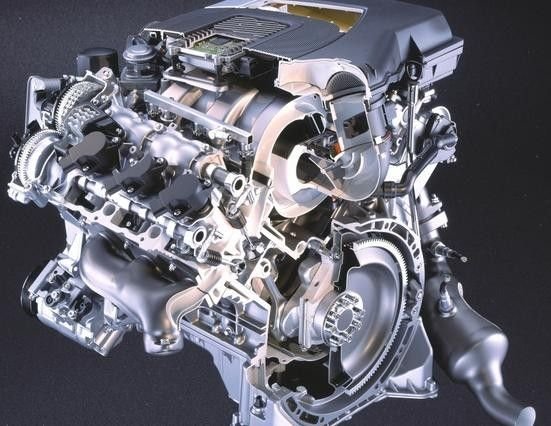
Pro Tip
During the break-in period, it is not unusual to find a metallic "glitter" from the machining process in the engine oil and filter.
Step 2 – Worn parts or damaged parts
If you drive an older C-Class w204 or a car with many miles on the odometer, parts may be worn, allowing oil to flow passed them into the cylinders where the oil burns. If you are not experiencing any smoke from the exhaust but you are adding a quart or more between oil changes, it could be:
-
The PCV system is not working properly, and you will need to replace the PCV valve.
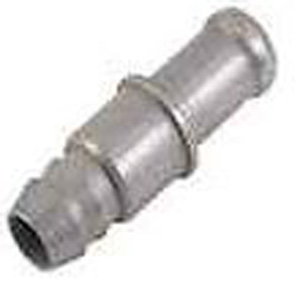
Figure 2. PCV valve. - Valve seals may be worn, and should be replaced.
- The engine's seals and gaskets may be worn or damaged. Replace as necessary.
- Mechanical problems with the engine. Do a compression test on the cylinders, and repair as needed.
If you experience puddles of oil on the garage floor and you are adding oil between changes, then:
-
It could be as simple as a loose oil filter. Check and tighten the filter as needed.
- Gaskets and seals may be damaged or worn. Find the damaged parts and replace them.
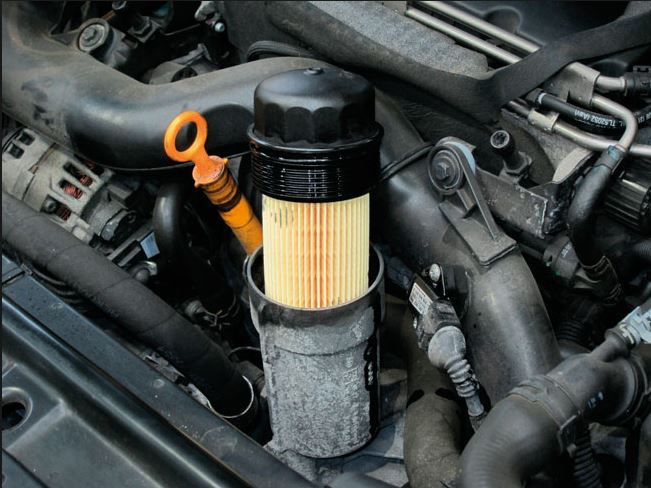
If you experience blue smoke coming from the exhaust and reduced or sluggish engine response, you might have:
- Worn piston rings, allowing oil to get passed them into the cylinder where it burns. Time to replace the piston rings.
- A scorched or grooved cylinder wall. Time to replace the engine.
Step 3 – Oil cooler problems
If you have an oil cooler, some of these devices use circulating coolant to cool the oil. If there is a leak, the oil and coolant can mix. If you are adding oil between changes and you find foamy, brown-colored oil in the coolant, repair or replace the oil cooler. Alternatively, the lines that feed oil into and out of the cooler are susceptible to being cut or damaged by debris. Do a visual inspection, looking for leaks or wet oil cooler lines, which indicate a leak.

Step 4 – Damaged head gasket or cylinder head
If you have foamy brown coolant in the radiator reservoir, white smoke coming from the exhaust, and periodic overheating, it may mean:
- You have a blown head gasket, which you need to replace.
- You have a cracked cylinder head, which you need to repair or replace it.
This is the last case scenario because a blown head gasket does require complete disassembly of the engine, along with a rebuild to ensure that nothing was damaged due to overheating, or coolant getting into the cylinders.

Pro Tip
Some of these tasks like replacing or repairing a cylinder head and replacing piston rings are too complicated for a typical do-it-yourselfer. These are best left to professionals.
Related Discussions
- C-Class Oil Consumption - MBWorld.org
- C63 Burning Oil - MBWorld.org
- Burnt Oil Smell - MBWorld.org
- High Mileage Oil Type - MBWorld.org

